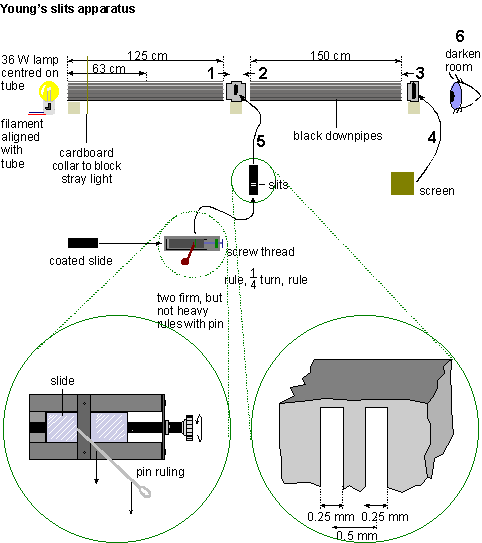 |
High School
Teachers at CERN |
 |
|
| WWW.CERN.CH |  |
||
 |
High School
Teachers at CERN |
 |
|
| WWW.CERN.CH |  |
||

3. Use an ordinary ruler to measure the separation of the fringes. Also measure the distance from the two slits to the screen. 4. A little geometry allows you to find the wavelength of light – see the Advancing Physics AS student's book, chapter 6. Question 130X 'Calculating wavelength in two-slit interference' is also available. 5. Calculate the average wavelength of the light.
6. Use filters to repeat the experiment with blue and then red light. 7. Use the geometry to see why the fringe spacing becomes greater as the wavelength increases.
1. Measure short wavelengths – given sufficiently closely spaced slits that are narrow enough. 2. Account for the changes in fringe spacing as the
wavelength changes. [NB there is something missing in the picture from the lefthand drainpipe. See the picture in the 'Technician's notes'] |
| © CERN and High School Teachers Programme at CERN | Last modified: 28 June 2002 |